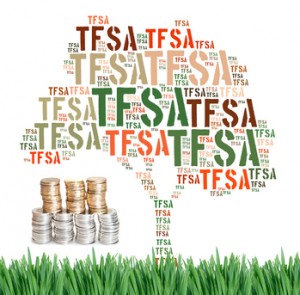My latest post at MoneySense.ca is headlined “CRA TFSA crackdown no cause for alarm.” Click through for the full piece. While you’re at it check out this post from the Hub recapping Tuesday’s one-hour live web chat with myself and Financial Post columnist Garry Marr, who has been breaking the stories about the CRA’s crackdown on excessively traded humungous TFSAs. The crackdown drew plenty of comments and suggestions.
For one-stop shopping purposes and convenience, I reproduce below the original text for my MoneySense blog on how investors should react to this crackdown.
Only minority targeted in CRA crackdown; keep maxing out your TFSA early in January
By Jonathan Chevreau
 Tax Free Savings Accounts (TFSAs) have come in for a drubbing lately, based on various media reports of a CRA “crackdown” on frequent traders who have racked up excessive gains.
Tax Free Savings Accounts (TFSAs) have come in for a drubbing lately, based on various media reports of a CRA “crackdown” on frequent traders who have racked up excessive gains.
On social media there seem to be a lot of ordinary investors taken aback by this, even though as I have said on Twitter, 99.99% of the almost 10 million Canadians who have a TFSA hardly need to worry about this obscure attack on a few sophisticated frequent traders of speculative stocks in their accounts.
Anyone who holds index funds, ETFs, blue-chip stocks or fixed income and is holding for the proverbial long term should stick with their plans for using their TFSA, including making a full maximum contribution early in January. Frequent online traders making dozens of trades a day are the target, especially if their trading patterns causes the CRA to view them as running businesses inside their TFSAs: if you or I traded that often we’d be losing a lot in trading commissions, even at the $5 or $10 a pop that most online brokerages charge.
As I have also pointed out, TFSAs are the mirror image of the RRSP, which has been around more than half a century. Even if there is a way to define what an “excessive” gain is, does this mean Ottawa would go back through half a century’s worth of deferred RRSP gains? It seems hardly likely.
TFSA remains best game in a highly taxed town
This is really a tempest in a teapot and I’d hate to think anyone scared off by this would fail to top up their TFSA early in January. As I’ve also said more than once, the TFSA is just about the best game in an otherwise highly taxed town. And as I said in this blog a few weeks ago, the uncovering of an end run that lets the wealthy contort their finances so as to collect for three years the Guaranteed Income Supplement (intended for the elderly poor) suggests that either GIS or TFSA rules or both may get tinkered with sometime in the next few years. So it’s best to fill up TFSAs while you can, just in case Ottawa starts to curtail their use for whatever reason. And that includes maximizing your children’s TFSAs if you’re able.
To be safe, check the CRA’s 8-point audit list
The Canada Revenue Agency has rolled out an 8-point list for a TFSA “audit” but a quick scan of the items should reassure ordinary investors that there’s little cause for alarm. I can see how some knowledgeable do-it-yourself investors who love to research stocks and spend time at their trading terminals might feel a bit uncomfortable but it’s pretty clear the CRA is more worried about those who make many (10 or 15 a day) trades and who quickly liquidate their positions. Also on the list are speculative non-dividend paying stocks, people who use margin or debt to leverage their positions, and those who advertise their willingness to purchase certain securities: again, well outside the realm of the ordinary investor trying to create a little tax-free dividend or interest income.
For most TFSA holders, danger is lack of capital gains not excessive ones
The irony about all this attention to a handful of professional speculators gaming the system for spectacular capital gains is that far too many TFSA users are doing the precise opposite. If all you do is go with a default GIC or low interest-bearing investment in your TFSA, then you’re not doing this vehicle justice. Chris Cottier, a Vancouver-based investment adviser with Richardson GMP, says any young investor with large debts – especially high-interest credit-card debt – should forget about TFSAs until they’ve eliminated that debt.
Very few investments can create gains greater than those accruing to those who pay off credit-card debt that approaches 20% per year.
But when are debt-free (except the mortgage), you’ll be better off holding equities in your TFSA than fixed-income investments sporting today’s minuscule interest rates.
MoneySense has long espoused a passive “Couch Potato” approach to investing in broadly diversified portfolios spread over geographies and multiple asset classes. That approach is particularly apt for TFSAs and is clearly the polar opposite of the type of investor the CRA is looking for.
So when January rolls around, do not hesitate to max out your TFSA contribution for the year 2015 and if it’s a quality ETF from a well-established manufacturer, I wouldn’t waste a minute’s thought on the CRA.
Jonathan Chevreau is Chief Findependence Officer for FinancialIndependenceHub.com.





